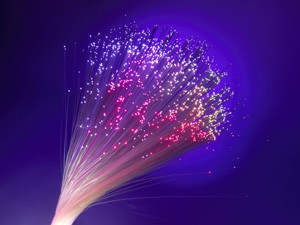
The Eastern Africa Submarine Cable System (Eassy), which runs from the coast of KwaZulu-Natal (Mtunzini) to Sudan, is about to be upgraded to more than double its current capacity.
This move is expected to ultimately result in an increase in quality of service and decrease in broadband prices.
French telecoms giant Alcatel-Lucent will deploy its latest 100Gbps technology, which will result in the 10 000km, 4.72Tbps subsea cable being able to carry capacity in excess of 10Tbps.
Alcatel-Lucent says the upgrade to Eassy - which entered service in 2010 - comes in response to "the continued explosion of data traffic in Africa".
Chairperson of the Eassy management committee, Chris Wood, says the consortium has seen enormous growth in demand for capacity on the system since Eassy entered service three-and-a-half years ago.
The latest upgrade, says Wood, will add 400Gbps of capacity throughout the system. It will enable Eassy members to offer customers the capacity they need for all the new services they are expanding into and applications they are developing, he notes.
What does it mean for SA?
World Wide Worx MD Arthur Goldstuck says the capacity boost will allow Eassy to offer "far greater capacity" to its clients - while doing so at a far lower cost.
"The economies of scale that come with increased cable capacity are the fundamental reason for cost of data coming down within the countries served by the cable."
Goldstuck says the move may also improve reliability, because more service providers will be likely to build redundancy into their services by taking capacity on multiple cables.
"When one cable goes down or there is a fault, the other cables are likely to keep going. That was the initial promise when Seacom arrived, but Seacom itself didn't plan proper redundancy - hence a connectivity crisis when there were cable breaks at various times. That should, ideally, be a thing of the past."
Ovum analyst Richard Hurst says the key issue with Eassy's upgrade will be the overall increase in quality of service.
Dobek Pater, analyst at Africa Analysis, says when looking at the potential of prices coming down, it must be noted the room to continue decreasing prices is limited.
"[The Eassy upgrade] will have an effect on prices, but prices have been steadily decreasing since Seacom landed in 2009. Over the next three years, prices kept coming down - to the point where we may even be looking at a 95% drop overall to date. Also, one must remember that providers also want to make money."
Other upgrades
In terms of whether the Eassy upgrade is a sign of similar boosts to come from the other cables serving SA (SAT3, SAFE, WACS, Seacom) - analysts say this is likely to be on an ad hoc basis - and in response to the general demand for data.
Goldstuck says the real evolution is happening terrestrially. "Fibre networks and grids are being laid down to bring this abundance of capacity to the end-user.
"The emphasis until now has been the major urban areas, particularly coastal cities, which are the most financially viable for providers, but there is increasing focus on rural and landlocked areas. These tend to be the outcome of funded projects, with the backing of bodies like the United Nations."
Pater notes the African subsea cable network is "pretty well provided for" - although consortiums and cable companies are continuously examining demand and making decisions based on their findings.
Goldstuck says: "The operators of undersea cables continually look at the feasibility of upgrades, and Seacom may well consider one to compete with Eassy, since they serve the same region. But there is no compelling reason to do so. We certainly don't have a shortage of capacity serving sub-Saharan Africa."
In terms of the likelihood of new subsea cable systems, Goldstuck says: "We're expecting a couple more cables to land, but at present these exist largely as PowerPoint presentations."
Hurst says he does not expect too much in the way of new systems being implemented in 2014. "I think that the real challenge that remains is the need and ability to shift the fibre and the capacity into the hinterland of Africa."
Share